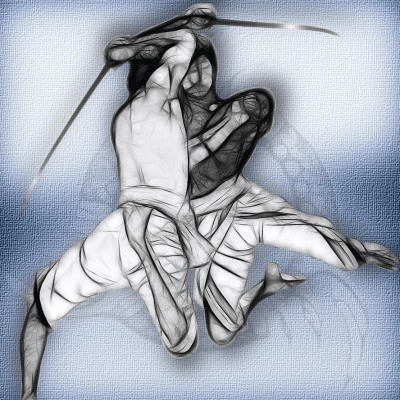Social evolutionists Kevin Foster and Hanna Kokko, in their recent paper in The Proceedings Of The Royal Society, set themselves the following problem:
…under what conditions might a tendency for performing behaviours that incorrectly assign cause and effect be adaptive from an individual fitness point of view?
It’s puzzling why the authors think there is anything to explain. Is superstitious reasoning an inheritable, evolutionary feature? Take woodcutting. Amateurs will work wood in incorrect and erroneous ways. That doesn’t there isn’t an efficient and systematic way to work wood that can be taught and encouraged. Do we really need an evolutionary explanation why we evolved to have babies who don’t know the difference between an adze and a maul?
Foster and Kokko’s real motivation is revealed, I think, in an earlier paragraph:
In a world increasingly dominated by science, superstitious and indeed religious thinking typically take a back seat in academic affairs. However, superstitions play a central role in many small-scale societies, and indeed remain prevalent in the popular culture of all societies. Why is this? Can science rationalize this seemingly most irrational aspect of human behaviour?
Needless to say, the authors’ rationalization is that superstitious reasoning may have some adaptive value. It’s a curiously Victorian attitude to human cognition; as if irrationality were somehow taboo, and town and manor had to be reassured that the phenomenon only appeared to be irrational.
One of my irrational habits, while reading papers on evolutionary models, is to substitute the key word– in this case, “superstitious reasoning”– with something else, say, “a fondness for weevils.” I’m glad to report that applying the technique to this paper produced an equally cogent explanation of why weevil-lovers roam the planet Earth.
I am only being half facetious. The authors’ running example involves rustling noises and potential lions in the undergrowth. But superstitions are more than just false causal associations. Intuitively, there’s a qualitative difference between believing that black cats are linked to bad luck, and believing in, say, the phlogiston theory of heat. Superstitions warn, portend, signal, prophesy, ward and pertain to uncertainty and good and evil. If we avoid cracks, surely it’s not because some ancient mother did break her back. Unfortunately, the authors take pains to explain that unlike previous work on superstitious reasoning, their model is not a psychological model. That’s not a strength. It means that the paper has no real subject-relevant content.
The reason for this lies in underlying mathematical model, a variant of George Price’s replicator-selection model1. The model is so general, it can apply, as Price himself put it, “from selecting a book or a radio station to genetic selection.” The real task for the evolutionist is to show why the model fits the phenomenon of interest. Is selection the only evolutionary dynamic? Is superstitious reasoning really a heritable behavior? Is it a feature like color-vision or webbed feet? Or is it like one’s fingerprint, a consequence of developmental biology and the chaotic physics of stretched skin, with no relevance whatsoever to evolutionary viability?
But let’s grant the authors their neutered model. Their basic argument is quite simple. Superstitions are  false causal associations. However they may be generally harmless, and occasionally, perhaps even beneficial. So it makes sense for individuals to act as if the causal connection were true, assuming of course, that the costs don’t outweigh the benefits. As the authors recognize, this reasoning is a form of Pascal’s wager. It’s not hard to show that selection pressure will favor superstitious people. Truth is, once Price’s model starts to crank its gears, there are no surprises. The authors had hardwired their conclusions the moment they set up the growth rates (reflected in the payoffs for superstitious/non-superstitious behavior). Suppose you’re told to clamber up a mountain and are not allowed to backtrack. Then there are only two possible stories: either you reach the top or you get stuck on some ledge along the way. In their model, the authors assume the mountain is fixed; that is, unaffected by the climb. In reality, though, evolutionary landscapes are more like sand dunes; the act of taking a step changes the landscape. We would expect superstitions to change the world, change fitness functions, change weights, change payoffs, change the players. However, in this model, the only thing that changes is the height from the ground.
false causal associations. However they may be generally harmless, and occasionally, perhaps even beneficial. So it makes sense for individuals to act as if the causal connection were true, assuming of course, that the costs don’t outweigh the benefits. As the authors recognize, this reasoning is a form of Pascal’s wager. It’s not hard to show that selection pressure will favor superstitious people. Truth is, once Price’s model starts to crank its gears, there are no surprises. The authors had hardwired their conclusions the moment they set up the growth rates (reflected in the payoffs for superstitious/non-superstitious behavior). Suppose you’re told to clamber up a mountain and are not allowed to backtrack. Then there are only two possible stories: either you reach the top or you get stuck on some ledge along the way. In their model, the authors assume the mountain is fixed; that is, unaffected by the climb. In reality, though, evolutionary landscapes are more like sand dunes; the act of taking a step changes the landscape. We would expect superstitions to change the world, change fitness functions, change weights, change payoffs, change the players. However, in this model, the only thing that changes is the height from the ground.
In any case, such “as-if” utilitarian explanations– optimality explanations– have limited utility. If X can produce Y, and Y has happened, then it’s not necessarily because X was used. If it’s a Sunday, then it makes sense today is a weekday, but if today is a weekday, then it doesn’t follow it’s because today is a Sunday. In fact, the odds are 6:1 that it isn’t. Similarly, just because there are superstitious people around doesn’t mean it’s because we used evolutionarily optimal strategies along the way. That evolution’s bumbling, fumbling, gambling, stumbling steps are also optimal is one of the most persistent superstitions of evolutionary modeling.
Then there’s the scalability problem. Do I really associate itchy palms with money, sidestep ladders, make sure not to spill salt, panic over broken mirrors, hold off cutting my nails on a Friday, avoid cracks like the plague, never ever open an umbrella indoors or criss-cross table-knives or throw stones into the sea or leave new shoes on the table or make sure to scratch my nose twice or…. all because it’s safer to assume a causal link than not to? Holding onto a single spurious association may not cost me much, but how about a hundred of them? In short, how does superstitious reasoning scale? The Foster-Kokko model cannot answer this question because it doesn’t have a sizing parameter; the number of superstitions and/or their interaction is not a factor. Superstitions often go to war with one another. It’s important to consider interaction effects because they typically rule out optimality results.
Is there an alternative explanation that avoids adaptationist arguments? I think so. Consider evolvability. It’s very easy to evolve an eye, but it’s very hard to evolve an eye immune to short sightedness. Perhaps it’s easy to evolve an error-prone brain capable of detecting its errors, but very hard to evolve a brain that’s perfectly logical. Difficult, that is, not for statistical reasons, but for neurobiological reasons. Evolvability asks the evolutionist to look for constructive explanations: what does it take to make an eye, an upright gait, an opposable thumb, a superstitous brain. If we can spell out the developmental process, we know something tangible about it. That requires serious shoe-leather research– trekking to godforsaken places, digging, excavating, cataloging, fighting dysentery, mucking around in the smelly innards of things, you know, the boring stuff– but the reward is that the data is the explanation. That’s why interest in the last decade and half has been shifting to evolvability: the theory of modifier genes, developmental biology, cell-driven processes rather than gene-driven processes and so on. Price’s model, while a marvel of simplicity and applicability, is a dead end.
Foster and Kokko’s question– and there’s a long list of talented scholars who are in love with such questions– is not meaningful in an evolutionary context. The answer for why humans are superstitious does not have to do with genetics. As Ronald de Sousa posited, perhaps “religion and superstition are the price we pay for science.”
Jim Dodge in his poem Unnatural Selections: A Meditation upon Witnessing a Bullfrog Fucking a Rock speaks to this trade-off:
Thus, urges urgently surging,
we mount a few rocks by mistake.
A bit more embarrassing than most of our foolishness, true–
but so what?
The power of the imperative
coupled with the law of averages
virtually guarantees enough will get it right
to make more brains to be made up
about exactly what steps to take
toward what we think we need to do
on this stony journey between delusion and mirage–
Chalk this paper up as one such sub-optimal mount.
***
Acknowledgements:
Featured image due to Todd Schorr‘s painting “The Torment of Sammy Squashbrains”, acrylic on canvas, 2002, 30″ X 24″.
- Price is without doubt one of the most remarkable figures in the history of mathematical biology. The theoretical biologist Steven Frank credits Price with three achievements: (1) the development of a very general equation that relates changes in fitness with changes in inheritable quantitative characters (the Price equation), (2) the first systematic use of game theory to study animal behavior, and (3) a widely accepted clarification of Fisher’s “fundamental theorem of selection.” His 1972 paper on the nature of selection is still worth reading for its many insights.




A very, very well written article (I will submit that I could not find a more dignified way to express my absolute admiration for your writings, and so will settle with this very plain post-script) : as always!
I completely agree with your opinion on rampant adaptionism plaguing discussions of every human trait from preferences in sex-positions to nose-picking. “The days when we roamed the Savannah” seem to have as much a sway on today's thought as repressed childhood sexual urges did about a century ago.
A personal favourite of mine is this infernal 'pattern-finding' business. “It was safer for your ancestor to assume that a shape he saw in the bush was a tiger than just a random shape, and therefore today you [insert trait to be explained here]”. It might very well have been that that poor sod saw so many tigers in so many bushes that he crushed his balls with the same rock Mr. Bullfrog was being serviced by in the last paragraph and excused himself from evolution.
Most of these explanations also don't take into account deleterious mutations that may end up greatly improving the fitness of the organism in the long run (get past 'local minima'). Ultimately, all of them are patently unfalsifiable, and that about turns any discussion into a matter of taste.
@RnS: Such praise will definitely prod this critter to keep writing, rather than procreating. Ergo, praise is evolutionarily counter-adaptive. What are you trying to do? Make me extinct? 🙂 Thanks, yaar.
Ref to your observation about temporarily-deleterious mutations: I'm beginning to think most of mathematical evolutionary theory is a dead end. Lynn Margulis has a similar view:
“The neo-Darwinist population-genetics tradition is reminiscent of phrenology, I think, and is a kind of science that can expect exactly the same fate. It will look ridiculous in retrospect, because it is ridiculous. I've always felt that way, even as a more-than-adequate student of population genetics with a superb teacher — James F. Crow, at the University of Wisconsin, Madison. At the very end of the semester, the last week was spent on discussing the actual observational and experimental studies related to the models, but none of the outcomes of the experiments matched the theory.” source
A very, very well written article (I will submit that I could not find a more dignified way to express my absolute admiration for your writings, and so will settle with this very plain post-script) : as always!
I completely agree with your opinion on rampant adaptionism plaguing discussions of every human trait from preferences in sex-positions to nose-picking. “The days when we roamed the Savannah” seem to have as much a sway on today's thought as repressed childhood sexual urges did about a century ago.
A personal favourite of mine is this infernal 'pattern-finding' business. “It was safer for your ancestor to assume that a shape he saw in the bush was a tiger than just a random shape, and therefore today you [insert trait to be explained here]”. It might very well have been that that poor sod saw so many tigers in so many bushes that he crushed his balls with the same rock Mr. Bullfrog was being serviced by in the last paragraph and excused himself from evolution.
Most of these explanations also don't take into account deleterious mutations that may end up greatly improving the fitness of the organism in the long run (get past 'local minima'). Ultimately, all of them are patently unfalsifiable, and that about turns any discussion into a matter of taste.
@RnS: Such praise will definitely prod this critter to keep writing, rather than procreating. Ergo, praise is evolutionarily counter-adaptive. What are you trying to do? Make me extinct? 🙂 Thanks, yaar.
Ref to your observation about temporarily-deleterious mutations: I'm beginning to think most of mathematical evolutionary theory is a dead end. Lynn Margulis has a similar view:
“The neo-Darwinist population-genetics tradition is reminiscent of phrenology, I think, and is a kind of science that can expect exactly the same fate. It will look ridiculous in retrospect, because it is ridiculous. I've always felt that way, even as a more-than-adequate student of population genetics with a superb teacher — James F. Crow, at the University of Wisconsin, Madison. At the very end of the semester, the last week was spent on discussing the actual observational and experimental studies related to the models, but none of the outcomes of the experiments matched the theory.” source
Trying to submit a comment, but the site keeps timing out. It was longish, so testing with this brief meta-comment.
Looks like there is a comment length limit. Mine was 417 words–posting on my site, with a link back here. Sorry for the length, here's the response: http://www.zephyr98.com/2009/12/monday-morning-co… .
Looks like there is a comment length limit. Mine was 417 words–posting on my site, with a link back here. Sorry for the length, here's the response: http://www.zephyr98.com/2009/12/monday-morning-co… .